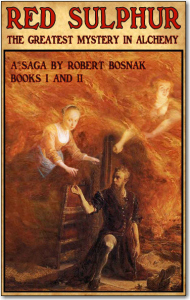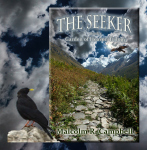Malcolm R. Campbell's Blog, page 208
January 25, 2015
Writing wasting away in Limboville
I’ve been asked what happened to my contemporary fantasy novels The Sun Singer and Sarabande.
 Since both have been well received, I found a new publishing home (Publisher B) after pulling them away from Publisher A due to a disagreement about the contract.
Since both have been well received, I found a new publishing home (Publisher B) after pulling them away from Publisher A due to a disagreement about the contract.
Publisher B had previously come out with many novels I enjoyed, some of which I had reviewed, so I thought I had found the perfect home for my work.
So what happened?
My guess is that staff turnover at Publisher B created a deluge of work that the remaining staff couldn’t keep up with. Nonetheless, when I sent the manuscripts to the publisher in the fall of 2013, I felt the publisher could meet his proposed release dates of January 2014 for The Sun Singer and May 2014 for Sarabande.
These dates were missed with no explanation and I was given a new set of release dates that were also missed with no explanation. Perhaps my request for a cover befitting a fantasy novel was the problem. I said that the covers supplied by Publisher A, while striking, weren’t typical fantasy covers; among other things, they gave readers no clue about the focus of the novels.
Publisher B agreed as did several of the artists he contacted who looked at the covers I’d had before. Yet somehow, no viable artist could be found until late in the summer of 2014. Finally, The Sun Singer was released last August with a nice cover and a great printing job.
E-book Problems
Unfortunately, the formatting of the e-books as a mess. The publisher blamed me for supplying documents that had formatting errors. He was right about that, though I consider the delivery of a manuscript to be the author’s responsibility and the formatting for print, Kindle, PDF and other e-books to be the publisher’s responsibility. I also expect the publisher to make sure the formatting is correct before the books go live on a seller’s site.
It took me several weeks to get Publisher B to remove the e-books from Amazon and Smashwords. I would have preferred the files be fixed and re-uploaded, but this didn’t seem to be happening. Then, Publisher B removed the print version from Amazon and elsewhere even though there was nothing wrong with it.
We had a variety of discussions about how the e-book formatting should be done, my preference being for something that mirrored the formatting of the print version. Whether I was asking for something impossible to deliver, I don’t know.
Finally, several weeks ago, Publisher B sent me an e-mail saying they were ready to release The Sun Singer in e-book (with a simplified formatting) and print.
Publisher B doesn’t seem to understand that the author needs to know the release date so s/he can do advanced publicity, set up give-aways on GoodReads, and talk about the book on Facebook and Twitter.
I asked for the release date and got no response. Publisher B asked me about Sarabande, I answered, and got no response. I asked about being added to the publisher’s blog so I could help promote the books and got no response.
Finally, I used my old e-mail address to ask the publisher if messages from my new e-mail address were ending up in the SPAM folder because we were (I thought) in the middle of a dialogue about moving forward and all I was hearing from Publisher B was the sound of silence. My question about the SPAM queue got no response.
So there it is. Both novels have been in limbo for over a year. Since Publisher B has authors and novels on their list that I like, I would prefer they release The Sun Singer and Sarabande. Whether they will or they won’t is a question stuck in the black hole of zero communication.
What Happens Now?
Now, if you are Publisher B and happen to be reading this, and have been sick, immersed in a family tragedy or a business reversal, then I would be sorry to hear that because I know what that’s like. I wish you had told me and propose that when you can’t keep up with e-mail, then a staff assistant needs to step up to the plate and keep things running smoothly.
If you’re not Publisher B and wish to have your work published, I’ll say that long delays of a year or so are not uncommon with major publishers, though you do need to have an agreed-upon time table for all the steps in the process. One of the benefits of working with a smaller publisher is the hands-on more personal approach as well as a shorter manuscript-to-print time frame.
My mistake here was not nailing down the release dates, with reasonable flexibility, in advance. Also, if small-publisher tradition and/or contract language specifies that the author is responsible for most of the marketing effort, the publisher needs to at least keep the author informed of release dates (and then stick to them) as well as having a blog or a system of news releases that announce the new books. This needs to be in the contract, too. I didn’t get that nailed down either because my back-and-forth e-mails with Publisher B gave me the impression my expectations about such things would be met without being backed up by clauses in the contract.
I’ve been in this business long enough to know better and ended up with my books in Limboville. There are many sites that show standard book contracts. While reading them doesn’t guarantee you’ll get a prospective new publisher to add any verbiage you find missing in his standard contract, you can always try.
I let my emotions get in the way: I was so upset with Publisher A about the contract dispute that everything Publisher B seemed to be offering looked like a breath of fresh air. It’s better to step away from those kinds of negative feelings and hopes and make sure you have a meeting of the minds with a prospective publisher before you sign the contract.
This is your cautionary tale.
Malcolm R. Campbell is the author of The Lady of the Blue Hour and The Land Between the Rivers. His short stories appear in The Lascaux Prize 2014 (2014) and Spirits of St. Louis: Missouri Ghost Stories (2013).

January 23, 2015
Original and Historic Paintings Donated to Glacier Park
from NPS Glacier National Park

Heaven’s Peak – NPS Photo
Glacier National Park recently received a generous donation of 21 historic paintings from Glacier Park, Inc. The paintings, originally created for the hotels, motels and lodges in the park, include pieces by John Fery, Frank Stick, R.H. Palenske, Charles Defeo and Richmond.
The pieces were originally owned and/or commissioned by the Great Northern Railway, many depicting iconic scenes from in and around Glacier National Park. All of the paintings are estimated to have originated between 1909 and 1915, and have been on display at Lake McDonald Lodge, Many Glacier Hotel, Rising Sun Motor Inn and the Two Medicine Campstore in the park.
The majority of the pieces are oil on canvas paintings. They range in size from 2.5 feet x 1.5 feet, to almost 6 feet x 12 feet. Some are by unknown artists. A plaque commemorating the donation will be placed by each painting.
A condition of the donation was that the paintings remain in the hotels, motels and lodges for which they were created. ���We greatly appreciate the willingness of the National Park Service to ensure that the original paintings be displayed in the lodges and properties within Glacier National Park, as they were intended when the Hill Family of the Great Northern Railway commissioned the paintings in the early 1900s. We are pleased that these beautiful images of the park���s history will continue to be enjoyed by many more generations,��� said Glacier Park, Inc. Vice President and General Manager Ron Cadrette.
���We are thrilled to receive this wonderful gift from Glacier Park, Inc.,��� said Glacier National Park Superintendent Jeff Mow. ���These paintings help tell the story of the early tourist accommodations in the park and the connection the railroad had in promoting this area to the nation.���
Xanterra Parks & Resorts, Inc.- Glacier National Park Lodges, will be responsible for the care and maintenance of the paintings through their concessions contract with the park.
Glacier Park, Inc., also known as GPI and a subsidiary of Viad Corp, is currently the owner and operator of two properties within the park: Motel Lake McDonald and Apgar Village Lodge. They also own and operate five other lodging properties in the local vicinity of Glacier-Waterton International Peace Park. Glacier Park, Inc. operated many of the park lodges and hotels as the primary concessioner in the park until 2014.

January 18, 2015
What might have been; what might still be
“Everyone who gives up a serious childhood dream ��� of becoming an artist, a doctor, an engineer, an athlete ��� lives the rest of their life with a sense of loss, with nagging what ifs.”
- Glenn Kurtz in “Practicing: A Musician���s Return to Music,” quoted in “The Pleasure of Practicing: A Musician���s Assuring Account of Creative Homecoming and Overcoming Impostor Syndrome” by Maria Popova
 If I were to give up writing, I would, to borrow an idea from Kurtz, feel the loss more strongly than the greatest lovers I have lost.
If I were to give up writing, I would, to borrow an idea from Kurtz, feel the loss more strongly than the greatest lovers I have lost.
Childhood dreams of becoming something–a poet, a novelist, a playwright–often nurtured by well-meaning parents who tell their sons and daughters they have what it takes to be great, often fade as interlocking realities about earning a living with creative writing as part of the equation.
Even before Amazon and e-books and free books and cheap books turned publishing upside down, few writers stepped out of college with a manuscript in their briefcases that was ready to become a critical and/or a commercial success on Broadway, in Hollywood or in a major publisher’s newly released book list.
Life as they say, got in the way. And it still does.
It’s easy to find oneself suddenly middle aged with a drawer filled with rejection slips for manuscripts actually submitted and another drawer filled with manuscripts that stalled somewhere between once upon a time and happily ever after.
How easy it is to stop trying, perhaps to ponder on dark and stormy nights what might have been if one hadn’t gotten married too soon, if the baby hadn’t forced one to take a second job, if aged parents hadn’t needed time-consuming care, if somebody somewhere had provided an ounce more of encouragement and support and/or a way for the amateur to get his or her foot inside the golden door to professional status.
It’s also easy to wonder what kind of youthful vanity or arrogance led one to believe s/he would be one of the appallingly small percentage of writers who earns all or a substantial percentage of his/her yearly income as a poet, novelist or playwright/screenwriter.
The dream seemed so right, how could it be wrong?
Quitting the dream makes sense because, with the list of failures in mind between then and now, it has injured a lot of people: spouses and lovers led from hope to hope and from pillar to post while the writer promised year after year that “this” was “the” book, while schedules and expenses and work spaces were arranged to accommodate the writer’s holy mission, while books and manuscripts turned the house into a warehouse of faded paper and faded hopes.
It’s hard to quit and easy to quit. It’s hard because, like the lottery player who thinks this week’s number will win the jackpot, the writer thinks “this time my work in progress will find an agent and then a publisher who believes in it.”
It’s easy to quit because writing, after a long while, becomes not only an expensive and time-consuming hobby, but a rather sad thing like the habits of inventors who think they’re on the verge of creating�� something the world needs or aging models who think “I still have it” or various other delusions that verge (at best) on hobbies and avocations when the stars and planets align.
When you quit, you stop growing and you feel the way you felt when the person you wanted to marry somehow slipped away. When you quit, you stop growing because you’re not practicing the craft your childhood or young adult self said it loved, said was a mission, said was like breathing, said was more important than sex, said was a life’s purpose, said was destiny.
If you’re lucky, so you don’t quit because practicing your craft is who you are and you realize when you’re not writing, you’re somebody you don’t recognize in the mirror.
Maybe Hollywood and Random House will never call, though you still dream that they might, and you understand that as some people like creating lists of all the birds they’ve spotted or the places they’ve been or the languages they’ve learnt, that you’re writing because it’s you and you love it and you cannot abide the death of part of yourself if you didn’t keep typing one word after another.
Loving it is where we need to be for those of us who aren’t Hillary Mantel and Stephen King or Nora Roberts, and so we keep writing for what might still be, the satisfaction of reading what we’ve written whether anyone else reads what we’ve written and finds any satisfaction from it, much less pays for the opportunity.
Perhaps we will one day be discovered. Meanwhile, we’re continually discovering ourselves through the words we put on the page.
–Malcolm
 Malcolm R. Campbell is the author of “Emily’s Stories” and “The Sailor.”
Malcolm R. Campbell is the author of “Emily’s Stories” and “The Sailor.”

January 16, 2015
Briefly noted: ‘Red Sulfur’ by Robert Bosnak
Man is a thinker.

��He is that what he thinks.
When he thinks fire
he is fire.
When he thinks war,
he will create war.
Everything depends
if his entire imagination
will be an entire sun,
that is, that he will imagine himself completely
that what he wants.
– Paracelsus
Red Sulphur: The Greatest Mystery in Alchemy [Kindle Edition], by Robert Bosnak, Red Sulphur Publications (December 8, 2014), 508pp
As I read this book, I cannot help but think of author Katherine Neville (The Eight, The Fire) who popularized the magical saga long before Dan Brown took the form to even larger audiences. I also cannot help but note that Robert Bosnak is a long-time Jungian analyst with widely-read nonfiction books to his credit who has studied alchemy for years. Jung was also a student of alchemy, seeing it as widely applicable to the understanding and development of the self. The heritage behind Red Sulphur brings great promise to this novel.
From the Publisher: It is 1666, the Year of the Beast, seen by many as the moment the Devil will appear on earth.
Science is in ascendance, crowding out other systems of thought. The ancient art of alchemy is in retreat. No one has been able to make the Philosophers��� Stone for over a hundred years, but many of the best minds of the age are still in a desperate search for it. Stories vividly abound how alchemists of yore had created a powerful stone of sorcery, rejuvenating all it touches — turning decrepit old lead into precious fresh gold. A universal medicine known to the alchemists by its true name: Red Sulphur.
From the Novel’s Epigraph: “This saga is based on the last verified historical reports by credible withesses about a mysterious transmutation. It follows the lives of a great alchemist and the two extraordinary women he loves. The last in the world in possession of the miraculous Red Sulphur, the source of all creative powers, they are pursued by dark forces and powerful world leaders. This is a visionary tale spanning two generations in the last days when magic was strong. It is the story of the final embers of the long gone days when the Magi could still do what we, children of science, hold to be impossible.”
Editorial Reviewer Comment: “A book both compelling and haunting. Robert Bosnak���s saga Red Sulphur traces the history of the split between alchemy and science in a tale of lust, greed and abiding passion.” – Penny Busetto:

Bosnak
From the author’s Amazon Page: “ROBERT BOSNAK grew up in Holland, trained in Switzerland, and has studied alchemy for over 40 years. He is a noted Jungian psychoanalyst specialized in dreaming with a practice in Los Angeles, and is the author and editor of 7 books of non-fiction in the fields of dreams, health, and creative imagination. His bestselling A Little Course in Dreams was translated into a dozen languages. He developed a method called ‘embodied imagination’ used widely in psychotherapy and applied worldwide to a variety of creative endeavors. The Red Sulphur saga is his first published work of fiction. He lives in the mountains of Santa Barbara.”
You have to be an alchemist, a Jungian or a mystic to love this book. That’s the beauty of it as a saga. You don’t need footnotes; instead, you need simply to love a story. The story might change you in ways you don’t expect, but then reading always has that kind of power over those who resonate with the characters, plots and themes.
 Malcolm R. Campbell is the author of magical realism and contemporary fantasy novels including “The Seeker.”
Malcolm R. Campbell is the author of magical realism and contemporary fantasy novels including “The Seeker.”

January 9, 2015
Last ditch effort to save Top Gun’s celebrated supercarrier from the scrap yard
Read more: http://www.digitaljournal.com/pr/2428378#ixzz3OLIbhNPb
-
This is great news. The ship would make a wonderful museum and would generate cultural tourism dollars to the community.
–Malcolm

January 1, 2015
Book Review: ‘Shadow Days’ by Melinda Clayton
 Shadow Days by Melinda Clayton
Shadow Days by Melinda Clayton
My rating: 4 of 5 stars
“Shadow Days” is a delightful addition to Melinda Clayton’s popular “Cedar Hollow” series, featuring in this novel protagonist Emily Holt who suddenly leaves her home in Florida and runs away on the anniversary of her husband’s death.
She ends up by chance and destiny in Cedar Hollow. The sheriff wonders if she’s crazy when he finds her and her broken-down car a few miles from town.
After she finds a place to stay, she begins to learn about the town and its people. Readers who’ve been with the series since it began with “Appalachian Justice,” will recognize just about everybody. Those who read “Shadow Days” first will, like Emily Holt, learn who’s who as the plot unfolds.
Emily has to come to terms with her husband’s death, the remnants of her life in Florida, her two sons who are off at college and don’t know where she is, and just who she is now in this off-the-beaten track town in West Virginia.
This is a well-told story with a cast of characters that increases in depth and scope as each new novel in the series is released. There are nice touches in the memories of characters such as collecting calendar towels and saving S&H Green Stamps. Very satisfying and hopefully not the end of the story.

December 28, 2014
It’s convenient, isn’t it, to believe in 2015?
“The idea that time is an illusion is an old one, predating any Times Square ball drop or champagne celebrations. It reaches back to the days of Heraclitus and Parmenides, pre-Socratic thinkers who are staples of introductory philosophy courses. Heraclitus argued that the primary feature of the universe is that it is always changing. Parmenides, foreshadowing Einstein, countered by suggesting that there was no such thing as change. Put into modern language, Parmenides believed the universe is the set of all moments at once. The entire history of the universe simply is.”
- Smithsonian in “What Does ‘Happy New Year’ Really Mean?
 It remains fashionable to kiss somebody, have a drink and say “Happy New Year” wherever (and possibly whenever) we may be when midnight occurs in our time zone.
It remains fashionable to kiss somebody, have a drink and say “Happy New Year” wherever (and possibly whenever) we may be when midnight occurs in our time zone.
We don’t concerns ourselves unless we’re really drunk or excessively sober and alone at that magic moment that people in some parts on the word said “Happy New Year” hours ago or that other people have yet to say it.
As a writer of fantasy and magical realism, I believe it’s my duty to say yes, Mr. Einstein, time does not exist. The appearance of time is convenient. But beyond that appearance everything is simply now.
So, you see that as long as I claim time is an illusion, I don’t have to get drunk at midnight on New Year’s Eve or, worse yet, look at all the things I didn’t get around to this “past” year and resolve with much fanfare to do them “this coming” year.
I realize that one can use the “time is an illusion” philosophy as an excuse for variously not planning ahead or for forgetting the “past,” much less showing up anywhere on time. Likewise, one doesn’t have to believe that time flies, that the “past” is over and done with or that there’s any reason to plan for the “future.”
Whichever side of the time debate we choose, we’ll always have all the rationalizations we need for doing whatever we like. That’s the beauty of these questions. They remain cryptic and mysterious and (possibly) filled with doubletalk. Maybe we really are, as the movie said, going back to the future. Maybe people who are said to be living in the past really are very forward-looking folks. Nonetheless, the “eternal now” remains illusive.
That said, best wishes for a Happy New Year even though such a thing might already be past history.

Kindle Version
Malcolm R. Campbell is the author of contemporary fantasy novels and paranormal short stories which may or may not exist in your time zone depending your belief system.

December 26, 2014
Briefly Noted: Two spiritual books from Mare Cromwell
The Great Mother Bible: or, I’d rather be gardening, by Mare Cromwell, Pamoon Press (December 26, 2014), 314pp.
On this, the second day of Christmas, Mother Nature might well have given me two turtle doves but, in fact, she gave me (and you, as well) The Great Mother Bible just released by Pamoon Press.
In her author’s note for Messages from Mother, Mare Cromwell says:
 “Where this information comes from is part of the Great Mystery to me. This book was written in only five weeks. I was focused on a completely different book and Spirit broadsided me in late June, 2012, and told me this was the book that I was meant to write. I was fighting lymphoma and essentially surrendered to Spirit to write this. I healed from cancer during the same time period.
“Where this information comes from is part of the Great Mystery to me. This book was written in only five weeks. I was focused on a completely different book and Spirit broadsided me in late June, 2012, and told me this was the book that I was meant to write. I was fighting lymphoma and essentially surrendered to Spirit to write this. I healed from cancer during the same time period.
“At times Spirit will just do that.”
I have been stalking spirit–as Annie Dillard has called it–for most of my life, and the fleeting glimpses I catch find their way into my novels as contemporary fantasy. As Jane Yolen has said of truths disguised, I tell it slant.
In Messages from Mother, Cromwell gives us more than a fleeting glimpse. We see spirit standing before us with no need for an oblique lens. Cromwell extends this vision in The Great Mother Bible.
From the Publisher:
 Mare Cromwell was awakened at 5 AM in November of 2013, and given specific instructions from the Great Mother to set aside that winter to listen and write The Great Mother Bible. Out of that spiritual call has come this revolutionary and humorous book of spiritual wisdom that speaks to the wondrous sacred realms in which we live. With teachings ranging from the role of aliens on Earth, the Christ Consciousness, and the need for balance between the Sacred Feminine and Divine Masculine, the Great Mother offers essential guidance to help bring our beleaguered world back into divine harmony.
Mare Cromwell was awakened at 5 AM in November of 2013, and given specific instructions from the Great Mother to set aside that winter to listen and write The Great Mother Bible. Out of that spiritual call has come this revolutionary and humorous book of spiritual wisdom that speaks to the wondrous sacred realms in which we live. With teachings ranging from the role of aliens on Earth, the Christ Consciousness, and the need for balance between the Sacred Feminine and Divine Masculine, the Great Mother offers essential guidance to help bring our beleaguered world back into divine harmony.
These are wondrous books for seekers who wish to establish a closer relationship with the natural world. And they come at a time when more and more people are seeing that threats to wild places–in fact to Earth itself–are more dire than they knew.
Psychologist Stanley Krippner writes that the Great Mother Bible will “inspire some readers but will infuriate others. Mare Cromwell’s profound relationship with the Great Mother offers a dialogue that is witty, wise and comical. Mare writes about ‘unseen forces’ but her luminous accounts bring a lucidity and reality to their insights that are uplifting, intriguing, and wondrous.”
If you discover one book this winter, pick one of these. If, however, you prefer two figurative turtle doves, discover both of these.
–Malcolm
Malcolm R. Campbell is the author of “Emily’s Stories”

December 24, 2014
Evergreens and Hope
We have seen unnatural darkness this year, that coming from hatred, intolerance, patriarchy, dominance over others, lusts for power and wealth and political and social advantage.

Live Oak
Winter brings us natural darkness, a time when seeds and dreams wait beneath snow and soil for rebirth and spring.
Long before Christmas trees were brought into our homes, evergreens had for centuries symbolized hope, rebirth and everlasting life.

Spruce
The symbolism of evergreens resonates with us today whether we’re conversant with the multiple traditions of holly, fir and other evergreens.
Their fragrance throughout the house, with without ribbons and bows, is a subtle reminder that natural darkness is not forever.
And with the hope of springtimes, perhaps we will have the strength and wisdom to combat unnatural darkness wherever if appears.

Holly
Whatever pathway brought you to this holiday season, perhaps you will find hope and peace here and the knowledge that the soul is truly evergreen.
–Malcolm

December 23, 2014
Ex-carrier Ranger set for last voyage in early 2015
from the Navy Times:

USS Ranger at sea in 1968 – US Navy Photo, cleared for publication
The ex-carrier Ranger is set to make its final sea voyage in early 2015.
The Navy paid 1 cent for shipbreakers to tow and scrap the decommisioned aircraft carrier, which once launched combat missions in the Vietnam War and Operation Desert Storm, Naval Sea Systems Command said Monday.
“Under the contract, the company will be paid $0.01. The price reflects the net price proposed by International Shipbreaking, which considered the estimated proceeds from the sale of the scrap metal to be generated from dismantling,” the NAVSEA release said. “$0.01 is the lowest price the Navy could possibly have paid the contractor for towing and dismantling the ship.”
The Ranger is to be towed from its berth in Bremerton, Washington, to Brownsville, Texas, where International Shipbreaking Ltd. is based. The carrier will have to be towed around South America, a four to five month journey, as its too large to fit through the Panama Canal, NAVSEA said.
The Ranger was commissioned in 1957 and spent its entire 36-year career in the Pacific, making a total of 22 Western Pacific deployments, NAVSEA said.
The dismantlement comes after veterans’ and historical groups were unable to raise enough money to turn the Ranger into a museum, like The Intrepid Museum in New York City. The Ranger had been on donation hold for eight years.
“After eight years on donation hold, the USS Ranger Foundation was unable to raise the necessary funds to convert the ship into a museum or to overcome the physical obstacles of transporting her up the Columbia River to Fairfview, Oregon,” NAVSEA said. “As a result, the Ranger was removed from the list of ships available for [donation] and designated for dismantling.”
-
What a waste.
–Malcolm




